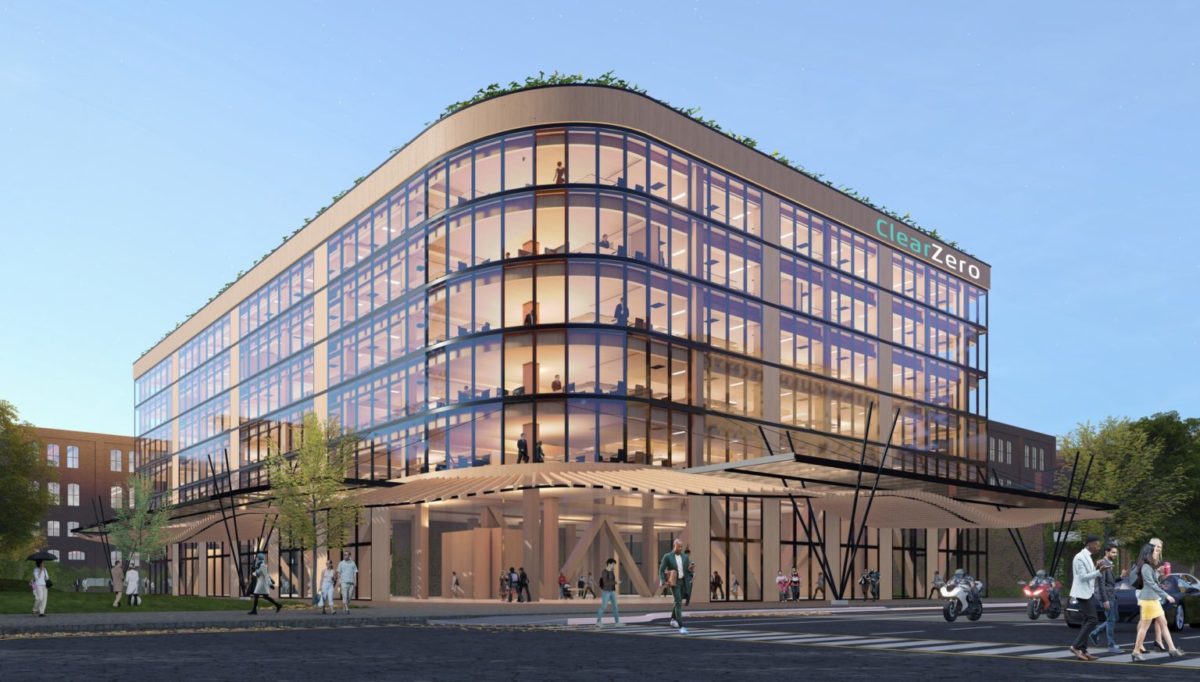From pv magazine USA and PV magazine Australia
Australian solar glass developer ClearVue Technologies has revealed the results of modeling to demonstrate the energy and thermal improvements of integrating PV products into inner-city buildings. Its findings are striking.
Integrating concentrator photovoltaics products such as solar windows into high-rise structures massively reduces carbon emissions by generating clean electricity and relying on thermal-insulative properties, which significantly reduce heating and cooling loads.
“The Archetype demonstrates the potential effectiveness of ClearVue products to reduce the carbon emissions by over 90%,” ClearVue Technologies Executive Chairman Victor Rosenberg told pv magazine Australia.
The “archetype” Rosenberg refers to is the name given to the modelled building – a computer simulation and detailed thermal model of a six storey, 15,000 m² office building in Toronto, Canada. The modeling was delivered by Canada's Footprint, with ClearVue noting that if the work had been completed for a climate like Australia’s, the performance may have even been better.
Nonetheless, the modeled building was found to be in the top 1% of Canadian office buildings for energy performance, scoring 99 out of 100 points in the North American building Energy Star Rating System.
“By using the [solar] windows we can bring the building closer to the emissions standards that people are demanding or expecting,” Rosenberg said.
Solar windows are still a burgeoning technology, but they’ve figured in our collective imagination for decades. ClearVue commissioned the newly published modeling, in part, to help it quantify specifically how the technology will enable the ‘net zero’ buildings, perhaps even cities, of the future. This is obviously particularly important as new building standards are rolled out globally to improve sustainability.
Currently, the construction of buildings and their operations account for well over one-third of global CO2 emissions annually, with building operations responsible for the lions share at 28%.
One of the most compelling features of the Archetype building model, Rosenberg said, is that it was able to maintain a high level of glass to wall ratio. Historically windows are the weak link in a building’s thermal performance, so low carbon buildings tend to reduced window to hit energy use and carbon emission targets. The modeling compared the building to standards in Canada, the United States, Singapore, Australia and New Zealand. The results indicated that the Archetype model ranks in the top tier of each.
Energy-producing windows
In a separate development, US-based Ubiquitous Energy, a commercial windows manufacturer that specializes in building-integrated photovoltaics (BIPV), has announced the closing of a $30 million Series B funding round. The company said it raised $70 million to scale up its transparent, energy-producing windows. The funding round was led by new and existing investors, including Andersen Corporation, ENEOS, Safar Partners, Hostplus, Red Cedar Ventures, and Riverhouse Investments.
Ubiquitous Energy claims that its technology is the only patented transparent PV glass coating that produces energy, while retaining the same look as a traditional window. The company has started site selection process for its U.S. manufacturing line, which will produce the UE Power window coating for sale to the windows industry. The company said that broad adoption of its UE Power windows could offset up to an estimated 10% of global carbon emissions, significantly reducing the 40% of global emissions that are sourced from buildings.
More than 20 billion square feet of windows are installed every year, creating an opening for the company to integrate its technology. This year, the company installed transparent solar windows at an NSG facility in Japan, a commercial office building in Colorado, and Michigan State University campus buildings.
“We are thrilled to bring on new and existing investors as partners, including ENEOS, a leader in the renewable energy sector, and Andersen, America’s premier window manufacturer,” said Susan Stone, Ubiquitous Energy’s CEO.
This content is protected by copyright and may not be reused. If you want to cooperate with us and would like to reuse some of our content, please contact: editors@pv-magazine.com.





By submitting this form you agree to pv magazine using your data for the purposes of publishing your comment.
Your personal data will only be disclosed or otherwise transmitted to third parties for the purposes of spam filtering or if this is necessary for technical maintenance of the website. Any other transfer to third parties will not take place unless this is justified on the basis of applicable data protection regulations or if pv magazine is legally obliged to do so.
You may revoke this consent at any time with effect for the future, in which case your personal data will be deleted immediately. Otherwise, your data will be deleted if pv magazine has processed your request or the purpose of data storage is fulfilled.
Further information on data privacy can be found in our Data Protection Policy.